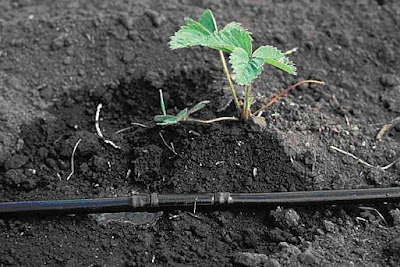Emitters:
The component about which centers the designing of a trickle system is the emitter. This device is attached to the lateral lines and feeds the water to the soil at flows ranging from 0.5 to 4 gph. A suitable emitter for an irrigation system should be (1) have a uniform and constant discharge rate (2) have a large flow cross-section to reduce clogging and (3) be inexpensive and compact. Many and varied emitters are currently manufactured and each has certain characteristics which affect the design of the system.

Emitters can be classified into three types.
Long path emitter
Tortuous path emitter
Nozzle type emitter
Tortuous path emitter
Nozzle type emitter

Fig shows hi flow dripper Pressure compensating Dripper 24 lph (6gph

octa shrubbler with 4mm Barbed inlet Adjustable
Flow 0-50 lph
4mm barb octa shrbbler on a 5 inch Spike
Flow 0-50 lph
4mm barb octa shrbbler on a 5 inch Spike

Adjustable Flow0-50 lph Adjustable flow dripper Single outlet 2-100 lp

Adjustable flow dripper Double outlet 2-100 lph

Super flow dripper Of 4, 8, 16 lph

Punch dripper
This classification depends upon the construction of the chamber through which the water flows. Additionally emitters can be self- flushing and can be designed to compensate for the pressure variations in the water supply. The water flows through the emitter can be classified as laminar, partially, turbulent or turbulent. The emitter type, the associated water flows along with the specific construction of the emitter, all effects its overall suitability for a given irrigation application. Careful consideration should be given to emitter selection, particularly to their susceptibility to clogging.






Nice information about PVC Casing Capping.
ReplyDeleteThanks....
Read More about Agri Pressure Piping Systems. then Visit our site www.Akggroupindia.com